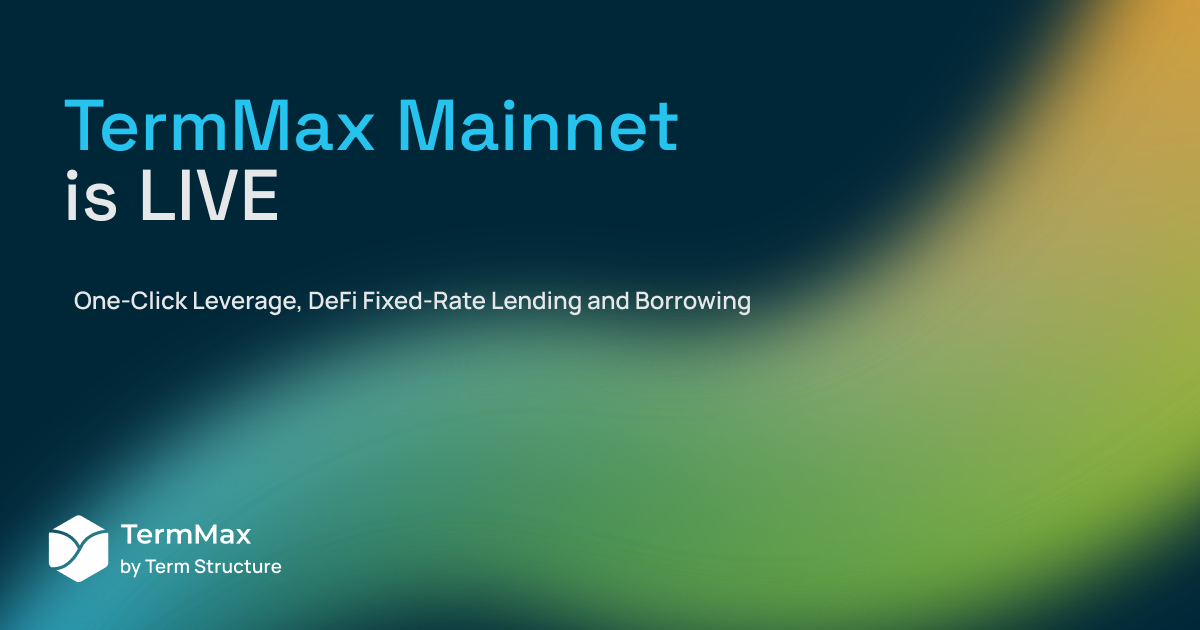What is Cosmos?
Cosmos is a revolutionary innovation at the heart of the crypto ecosystem. It is often dubbed theInternet of blockchains. It is a platform that aims to solve some of the thorniest problems of blockchain. These include interoperability, scalability and sovereignty. Discover the full journey of the cryptocurrency that today, plays an essential role in the crypto-currency universe. We will also explore how it is shaping the future of decentralised finance and blockchain applications.
Cosmos overview
Cosmos stands out for its bold vision of enabling different blockchains to communicate with each other seamlessly and securely. Using cutting-edge technologies such as the Tendermint consensus protocol, the Cosmos SDK andInter-Blockchain Communication (IBC), Cosmos creates an interoperable ecosystem. Blockchains can maintain their autonomy while participating in a wider network. This modular approach facilitates the development of blockchain-specific applications. It improves efficiency and accessibility for developers and end users.
Importance of Cosmos in the crypto ecosystem
The impact of Cosmos on the crypto ecosystem is profound. By breaking down the barriers between blockchains, Cosmos is paving the way for a new era of sustainable development,interoperability and scalability. This interconnection facilitates a multitude of use cases. These range from decentralised finance (DeFi) and non-fungible tokens (NFT) to blockchain games and decentralised autonomous organisations (DAOs). Cosmos represents not only a technical breakthrough, but also a step towards a more collaborative vision of crypto.
History of Cosmos
Cosmos has a fascinating history, marked by an ambition to solve the problem of interoperability between blockchains. This section traces the evolution of Cosmos, from its origins to its current status as a cornerstone of the crypto ecosystem.
Origins and development of Cosmos
The Cosmos project was launched in 2014 by Jae Kwon, who introduced the Tendermint consensus. This is an innovative consensus protocol offering an alternative to traditional Proof of Work (PoW) and Proof of Stake (PoS) mechanisms. The idea was to create a solid foundation for interoperable blockchains, capable of exchanging information and values without intermediaries. The project took shape thanks to a successful ICO in 2017. This ICO raised funds to develop and launch the Cosmos Hub network in 2019.
Main stages of development
Since its launch, Cosmos has undergone several major updates that have contributed to its growth and adoption. Key milestones include :
- Launch of the Cosmos Hub: the first hub in the Cosmos network, facilitating interconnection between different blockchains.
- Introduction of IBC (Inter-Blockchain Communication): a protocol enabling the secure transfer of tokens and other data between IBC-compatible blockchains.
- Cosmos SDK updates: ongoing improvements have been made to simplify the creation of customised, interoperable blockchains.
The founders of Cosmos
Cosmos was founded by Jae Kwon and Ethan Buchman. Jae Kwon, who also contributed to the development of the Tendermint protocol, is often credited for his technical vision and contribution to the concept of the Internet of blockchains. Ethan Buchman, co-founder and passionate technologist, played a key role in the conceptualisation and promotion of Cosmos. He has also played a role in developing its principles of governance and sustainable economics.
The initial vision of the founders was to create an ecosystem in which different blockchains could operate independently but still be able to communicate with each other. This vision is based on the principles of sovereignty, scalability and interoperability. Its ultimate goal: to facilitate a decentralised and open Internet.
Cosmos continues to evolve, guided by an active community of developers, researchers and users committed to the vision of an interconnected blockchain ecosystem. The platform is constantly developing, adding new features, growing its network of blockchains and broadening its impact on the crypto world.
Let’s take a closer look at the technical characteristics of Cosmos, its areas of application, and the future prospects for this promising technology.
Areas of application for Cosmos
Cosmos, with its unique infrastructure, opens up a vast range of possible applications, from decentralised finance (DeFi) to blockchain gaming. It also integrates non-fungible tokens (NFTs) and decentralised autonomous organisations (DAOs). This section explores how Cosmos is revolutionising different areas thanks to its innovative architecture.
Interoperability of blockchains
Interoperability is at the heart of Cosmos’ value proposition. By enabling different blockchains to communicate and transfer assets seamlessly, Cosmos creates a digital ecosystem where information and value can flow freely between projects. This interoperability greatly expands the possibilities for innovation and application of blockchain technology.
Use cases and flagship projects
- DeFi (Decentralised Finance): Cosmos enables the development of cross-chain DeFi applications, giving users access to innovative, secure and transparent financial services. DeFi platforms on Cosmos benefit from the ability to interact with various blockchains, increasing their liquidity and accessibility.
- NFTs (Non-Fungible Tokens): By supporting the creation and exchange of NFTs between different channels, Cosmos is opening the door to a larger, interconnected market for digital art and collectibles. This allows creators and collectors to exploit the full potential of NFTs. They are not limited by the boundaries of a single blockchain.
- Gaming: The Cosmos ecosystem offers a solid platform for the development of blockchain games with cross-chain assets. Players can benefit from a seamless experience. They can transfer game assets, such as characters or items, between different universes.
- DAOs (Decentralised Autonomous Organizations): Cosmos facilitates the creation and management of DAOs. It provides the tools needed for effective decentralised governance. Thanks to interoperability, DAOs can interact with a variety of services and communities within the Cosmos ecosystem.
Cosmos offers an elegant solution to the challenges of interoperability and scalability in the blockchain space. Its innovative approach facilitates a wide range of applications, transforming the landscape of blockchain technology. It also paves the way for a future where blockchains can work together harmoniously and efficiently.
Features of Cosmos
The Cosmos ecosystem is distinguished by a set of unique features that position it as a key player in the blockchain universe. These features include its modular architecture, the native ATOM token, and its innovative consensus mechanism, among others.
Technology and infrastructure
Cosmos is based on the Cosmos SDK and the Tendermint consensus protocol. Together, they provide a robust platform for the development of interoperable, high-performance blockchains.
- Cosmos SDK: A flexible framework that allows developers to build custom blockchains with a stack of predefined or custom features. This framework facilitates rapid development and implementation of new ideas.
- Tendermint: This Byzantine Fault Tolerant (BFT) consensus protocol ensures the security and speed of transactions within the Cosmos ecosystem. It also allows great flexibility in the creation of blockchains. Tendermit separates the application layer from the consensus layer.
ATOM: The native Cosmos token
ATOM is Cosmos’ native token, serving as both a governance token and a staking token. ATOM holders can participate in major ecosystem decisions through an on-chain governance system. They can also use their tokens to secure the network, in exchange for rewards.
How does Cosmos work?
Cosmos operates on a number of key principles:
- Tendermint consensus: Ensures rapid finalisation of transactions and high resilience to Byzantine errors.
- Cosmos architecture: Zones and Hubs: Cosmos is structured around hubs and zones, with the hubs acting as central routing points for transactions between zones. This enables interoperability and the exchange of tokens.
Partners and collaborations
Partnerships and collaborations play a crucial role in the expansion and adoption of Cosmos. The project has partnered with various blockchain companies and projects to integrate its interoperability technology. This enables it to extend its influence well beyond its immediate ecosystem.
Recent developments
Cosmos continues to evolve, with regular updates to its platform and SDK to improve performance, security and user experience. The expansion of the Cosmos ecosystem is demonstrated by the constant addition of new interoperable blockchains. This increases the value and usefulness of the network for developers and end users.
Taken together, these features make Cosmos a leading blockchain platform. It offers a complete solution for interoperability, scalability and innovation in the crypto space. Its cutting-edge technology and community-centric approach continue to foster a diverse and thriving blockchain ecosystem, ready to take on the challenges of tomorrow.
Future prospects for Cosmos
As Cosmos continues to develop and evolve, future prospects look bright for this revolutionary blockchain ecosystem. With ambitious projects underway and a growing community, Cosmos is positioning itself as a major player in the world of blockchain, ready to shape the future of interoperability and scalability in decentralised networks.
Roadmap and future projects
The team behind Cosmos is working tirelessly to improve and extend its capabilities. Future goals include enhancingInterchain Security, allowing smaller blockchains to benefit from the security of larger, established blockchains within the Cosmos ecosystem. In addition, the focus is on expanding theInterchain Communication Protocol (ICP) to facilitate even smoother interoperability between different blockchains.
Another area of interest is sustainable development and energy efficiency. They respond to growing concerns about the environmental impact of blockchain technology. Cosmos is committed to adopting practices that minimise its carbon footprint while maintaining performance and security.
Analysis of challenges and opportunities
While the future of Cosmos is bright, there are a number of challenges that need to be addressed to realise its full potential. One of the main challenges is mainstream adoption and integration with other blockchain ecosystems. This requires ongoing efforts in education and strategic partnerships.
On the other hand, Cosmos faces enormous opportunities. The rise of decentralised finance (DeFi), NFTs, and blockchain gaming offers Cosmos a chance to demonstrate the value of its interoperability and scalability. In addition, with increasing interest in sovereign and customisable blockchain solutions, Cosmos can play a key role in providing the technology to support this trend.
Impact of Cosmos on the Crypto Market
Cosmos’ impact on the crypto market is already significant, but is poised to grow even further in the coming years. As a pioneer in blockchain interoperability, Cosmos has the ability to unite the different segments of the crypto ecosystem, fostering increased collaboration and innovation. This unifying vision could lead to greater adoption of blockchain across various sectors, strengthening Cosmos’ position as a technology leader.
Cosmos’ future prospects are both ambitious and achievable. With a committed community, cutting-edge technology, and a clear vision, Cosmos is well positioned to continue playing a leading role in the evolution of blockchain. Its commitment to interoperability, security, and scalability promises not only to transform the crypto ecosystem but also to open up new avenues for blockchain adoption worldwide.
ATOM Token – guide for investors
Investing in Cosmos (ATOM) offers a unique opportunity to participate in a burgeoning blockchain ecosystem characterised by innovation and interoperability. However, as with any investment in cryptocurrencies, it is crucial to proceed with a clear understanding of the market, risks and best practice. This guide aims to provide investors with the information they need to navigate the Cosmos universe.
How to buy and store ATOM
Buying ATOM tokens is relatively simple and can be done on most major cryptocurrency exchange platforms. Here are the general steps:
- Choose an exchange platform: Select a reputable exchange that offers ATOM for purchase. Binance, Coinbase and Kraken are just a few examples of popular exchanges that list ATOM.
- Create and verify an account: Follow the registration and verification process for your chosen platform.
- Deposit funds: You can deposit funds via bank transfer, credit card or by transferring other cryptocurrencies.
- Buying ATOM: Once the funds have been deposited, you can buy ATOM at the current market price.
To store your ATOM tokens, we recommend using a secure wallet, either a cold wallet such as Ledger or Trezor, or a hot wallet with support for Cosmos. Make sure that the wallet you choose supports ATOM staking, if you want to help secure the network and earn rewards.
Investment advice and risks
Investing in Cosmos, like any other cryptocurrency, involves risks. Here are some tips to help minimise those risks:
- Do your research: Understand the Cosmos ecosystem, how it works, its future plans and its market positioning.
- Diversify your portfolio: Don’t put all your eggs in one basket. Diversification can help reduce risk.
- Be aware of volatility: Cryptocurrency prices can be extremely volatile. Be prepared for short-term price fluctuations.
- Consider staking: ATOM staking can offer rewards, but it also carries risks. Understand the process and implications before you commit.
Cosmos vs Ethereum and Cosmos vs Polkadot
Comparing Cosmos to other blockchain ecosystems such as Ethereum and Polkadot can help investors better understand its unique value:
- Cosmos vs Ethereum: While Ethereum focuses on creating a decentralised ecosystem around smart contracts, Cosmos stands out for its approach to interoperability between blockchains, offering a solution for connecting various chains efficiently.
- Cosmos vs Polkadot: Like Cosmos, Polkadot aims to solve the problem of interoperability. However, the two projects use different approaches in terms of technology and governance. Cosmos relies on a modular architecture with the Cosmos SDK and Tendermint, while Polkadot uses the concept of parachains and parathreads.
Investing in Cosmos presents unique opportunities as well as challenges. A balanced and well-informed approach is essential to navigate this rapidly evolving space and make the most of your investment in Cosmos (ATOM).
ATOM Tokenomics
Understanding tokenomics, or the economics of tokens, is essential for anyone interested in investing in Cosmos (ATOM). This section explores the supply structure, distribution, and economic incentives behind the ATOM token, providing crucial insight into its value and function in the Cosmos ecosystem.
Initial and current offer
ATOM was launched through a public sale in 2017, with an initial allocation of tokens intended to support the development and growth of the Cosmos ecosystem. Since then, ATOM’s offering has grown, primarily due to the staking rewards distributed to validators and delegators who secure the network. ATOM’s total offer is not capped, which means that it can increase over time through the staking process.
Cosmos crypto distribution and inflation rate
ATOM’s distribution follows a model designed to encourage participation in the network and secure the ecosystem. Tokens are distributed between the founders, the initial investors, the Cosmos Foundation and the developer community, with a significant proportion earmarked to reward network players for their contribution to the security and operability of the system.
ATOM’s inflation rate is variable and adjusted according to the staking participation rate. The aim of this mechanism is to maintain an optimum level of participation in order to secure the network. Its inflation rate decreases when participation is high and increases when participation is low.
Functionality and usefulness of the ATOM token
The ATOM token plays several key roles in the Cosmos ecosystem:
- Security: ATOM is used for staking, a process whereby holders block a certain quantity of tokens as collateral for participating in the validation of transactions and securing the network. In return, they receive rewards in the form of ATOM.
- Governance: ATOM holders have the right to vote on governance proposals, thereby influencing the future direction of the project and updates to the protocol.
- Transaction fees: ATOM can be used to pay transaction fees on the Cosmos Hub, although individual zones may accept other tokens for fees.
Participation in the Cosmos hub
The Cosmos Hub, at the heart of the ecosystem, relies on the active participation of ATOM holders for its governance and security. Validators, elected by ATOM holders through the staking process, play an essential role in the operation of the network, processing transactions and participating in consensus.
Risks of participating in the Cosmos hub
Although ATOM staking offers potential rewards, it also involves risks. Malicious behaviour or failures on the part of validators reduce the tokens at stake. It is therefore crucial for participants to choose carefully the validators to whom they delegate their tokens.
ATOM tokenomics is designed to encourage active and secure participation in the Cosmos ecosystem, while providing economic incentives for the governance and maintenance of the network. Understanding these principles is fundamental for investors and participants wishing to make an informed commitment to Cosmos.
Conclusion
Cosmos represents a major innovation in the cryptocurrency ecosystem, tackling head-on the challenges of interoperability, scalability and blockchain sovereignty. Thanks to its unique architecture based on the Tendermint consensus, the Cosmos SDK and the IBC protocol, Cosmos enables the creation of an interconnected network of blockchains, facilitating the free exchange of information and value without the traditional constraints.
ATOM’s offering and tokenomics, designed to encourage participation and secure the network, underline Cosmos’ commitment to decentralised governance and continuous innovation. With its varied applications, from decentralised finance (DeFi) to blockchain gaming and NFTs, Cosmos is expanding the horizons of what is possible in the crypto universe, offering new opportunities for developers, investors, and users.
In the face of challenges and opportunities, Cosmos continues to evolve, guided by a clear vision and an active community. Cosmos’ future prospects are promising, with ambitious plans to strengthen its infrastructure and expand its influence in the blockchain world. For investors, understanding the complexity and potential of Cosmos is key to navigating this dynamic space and taking advantage of the opportunities it offers.
Ultimately, Cosmos does more than simply offer a technical solution to blockchain interoperability. It embodies a bold vision for the future of decentralised technology, where networks can collaborate seamlessly. Cosmos will play a central role in the next generation of the decentralised Internet.
FAQ
What is the role of the ATOM token in the Cosmos ecosystem?
The ATOM token plays several key roles in the Cosmos ecosystem. Firstly, it is used for staking, which makes it possible to secure the network and participate in the consensus. ATOM holders can also use their tokens to vote on governance proposals. This freedom makes it possible to influence the future development of the ecosystem. In addition, ATOM is used to pay transaction fees on the Cosmos Hub, although other tokens can be used for transactions within specific blockchains in the ecosystem.
How does Cosmos ensure interoperability between blockchains?
Cosmos ensures interoperability between blockchains through its IBC (Inter-Blockchain Communication) protocol. IBC enables the secure transfer of tokens and other data between compatible blockchains. It facilitates interactions without the need for intermediaries. This mechanism enables the various blockchains in the Cosmos ecosystem to preserve their sovereignty. In this way, they participate in a wider network, encouraging greater collaboration and innovation.
Can I use ATOM for staking and how does it work?
Yes, it is possible to stake with ATOM. Staking in Cosmos involves blocking a certain quantity of ATOM tokens as a guarantee for becoming a validator or delegator in the network. Validators actively participate in the network consensus by proposing and validating blocks. Delegators support the validators of their choice by delegating ATOMs to them. In exchange for their participation in network security, validators and delegators receive ATOMs. However, it is important to note that staking involves risks, in particular slashing. This occurs in the event of malicious behaviour or failure on the part of validators.
What are the main differences between Cosmos and Ethereum?
The main differences between Cosmos and Ethereum lie in their objectives and underlying architectures. Ethereum is primarily focused on creating a decentralised platform for smart applications and contracts. It uses a single blockchain with a Proof of Work consensus mechanism (and in transition to Proof of Stake with Ethereum 2.0). Cosmos, on the other hand, focuses on interoperability between blockchains. This allows various blockchains to communicate and transfer values via its IBC protocol. Cosmos uses the Tendermint consensus, which separates the application layer from the consensus layer.














